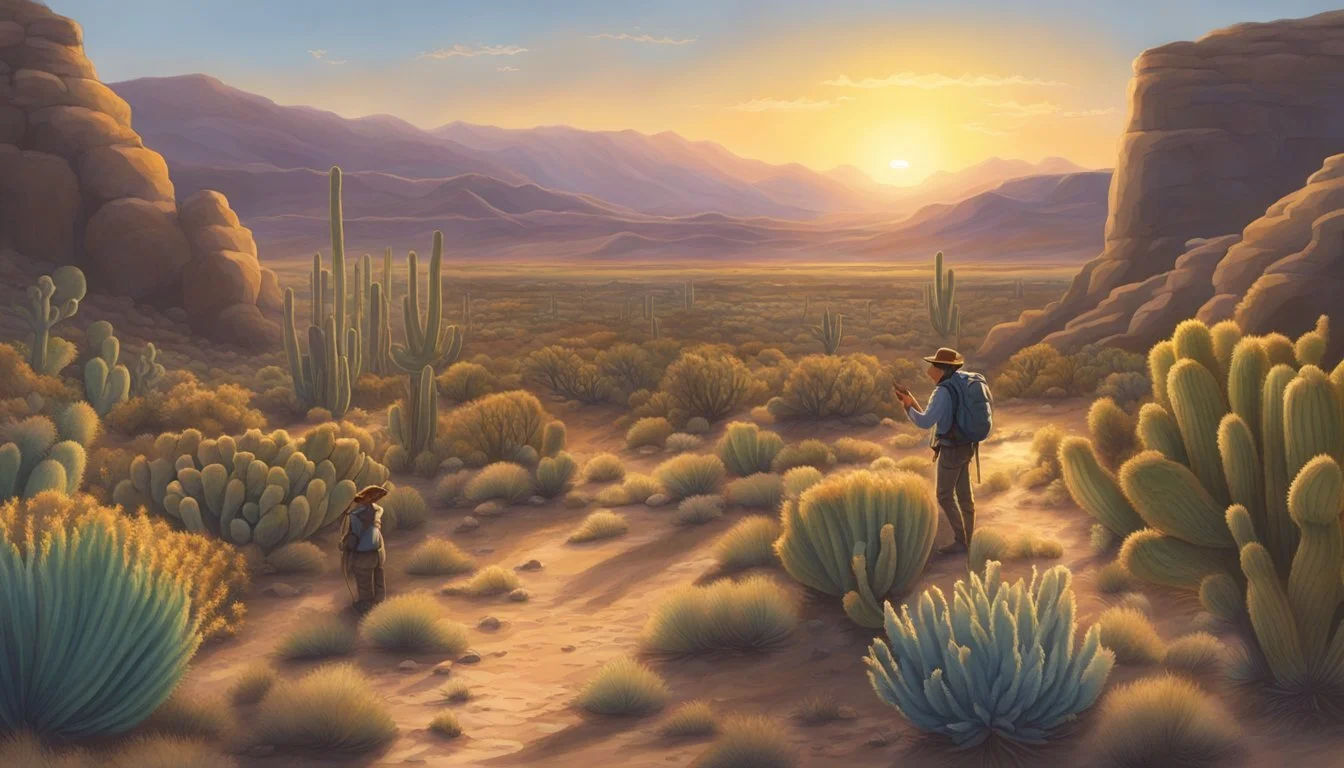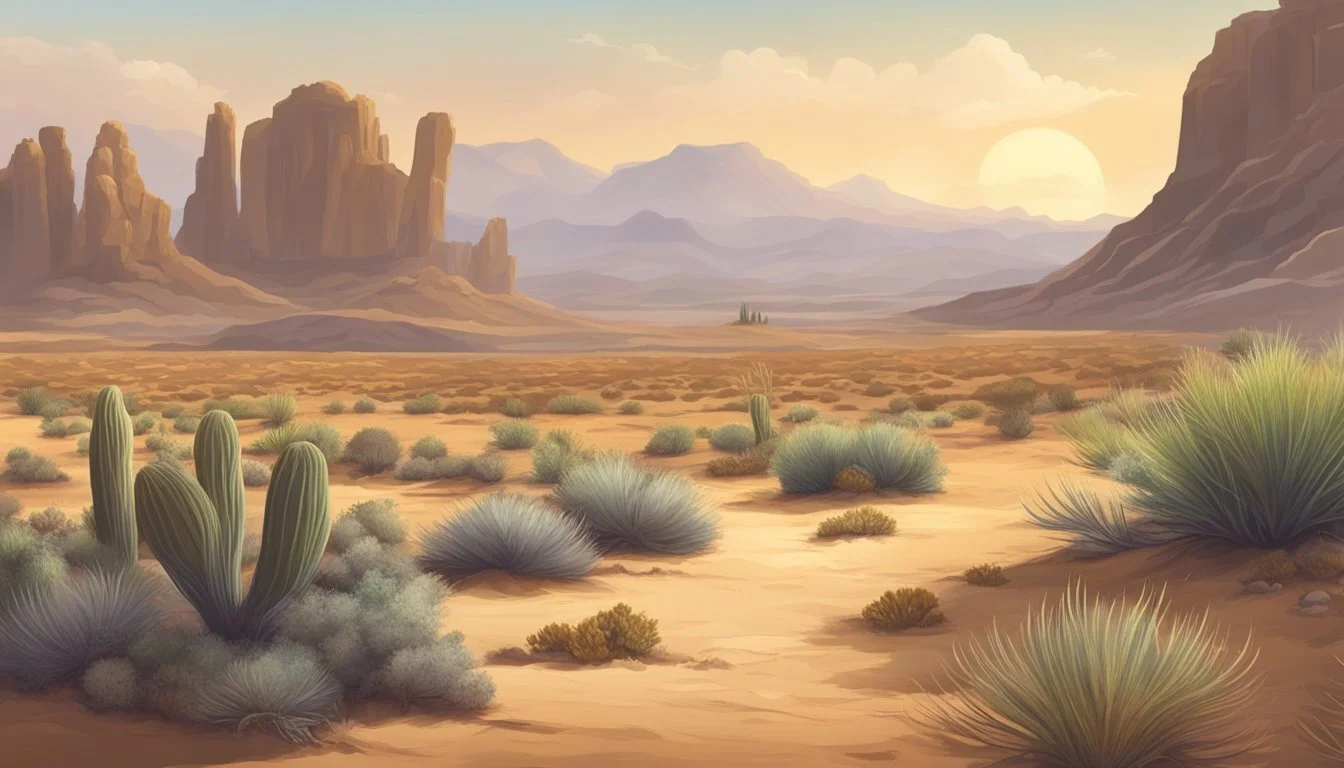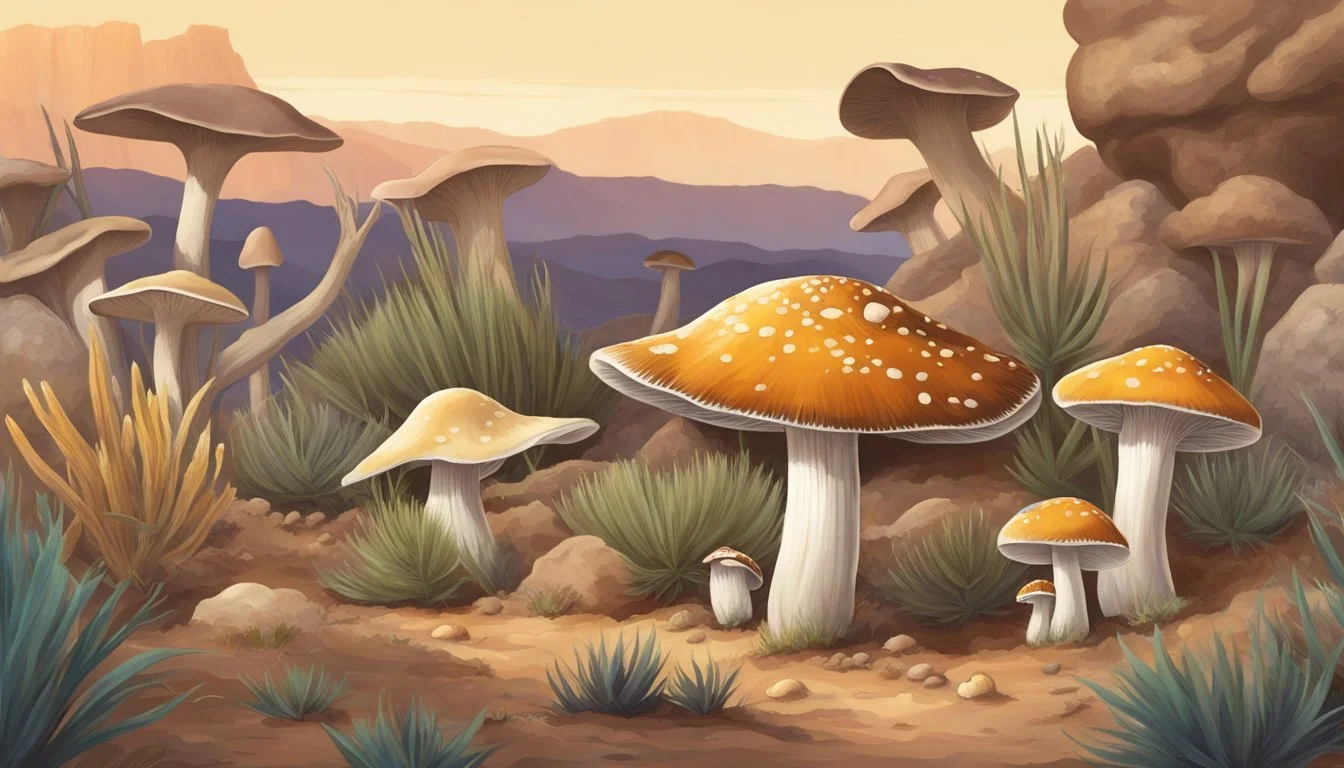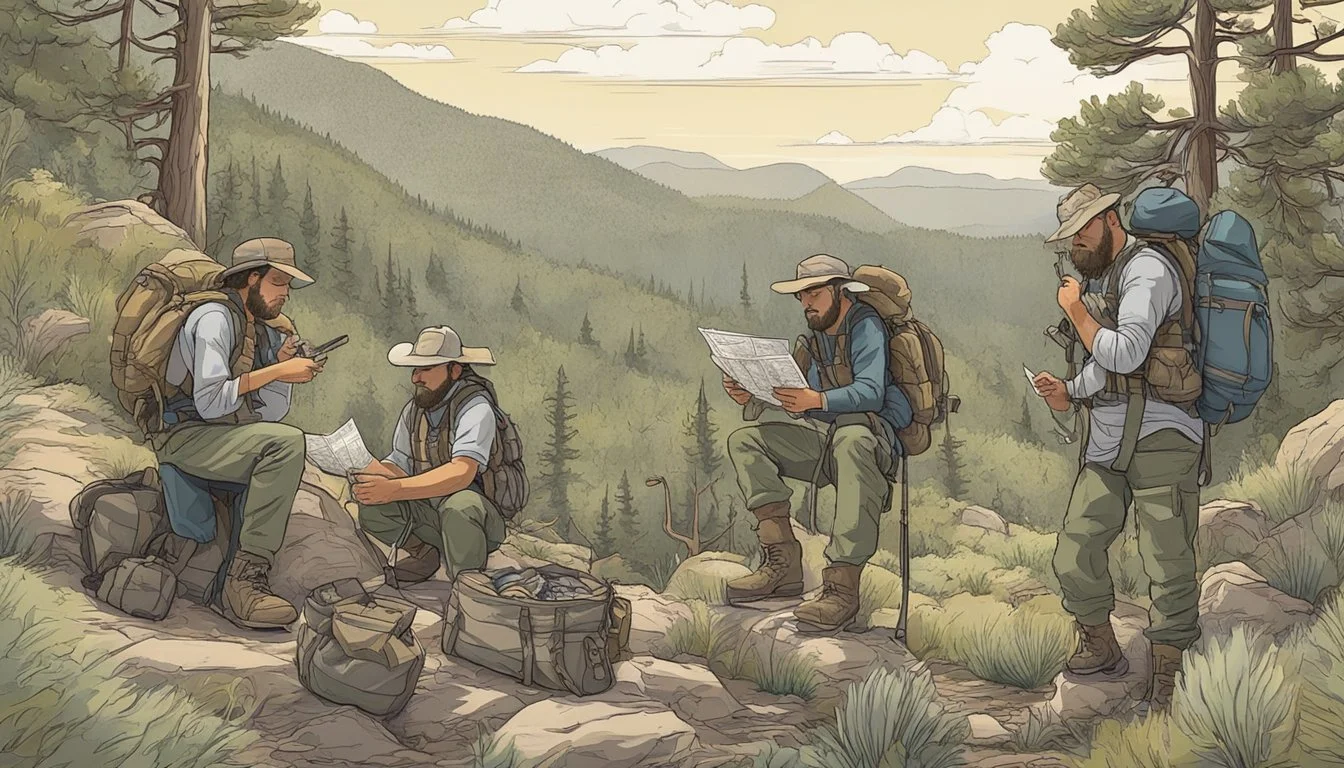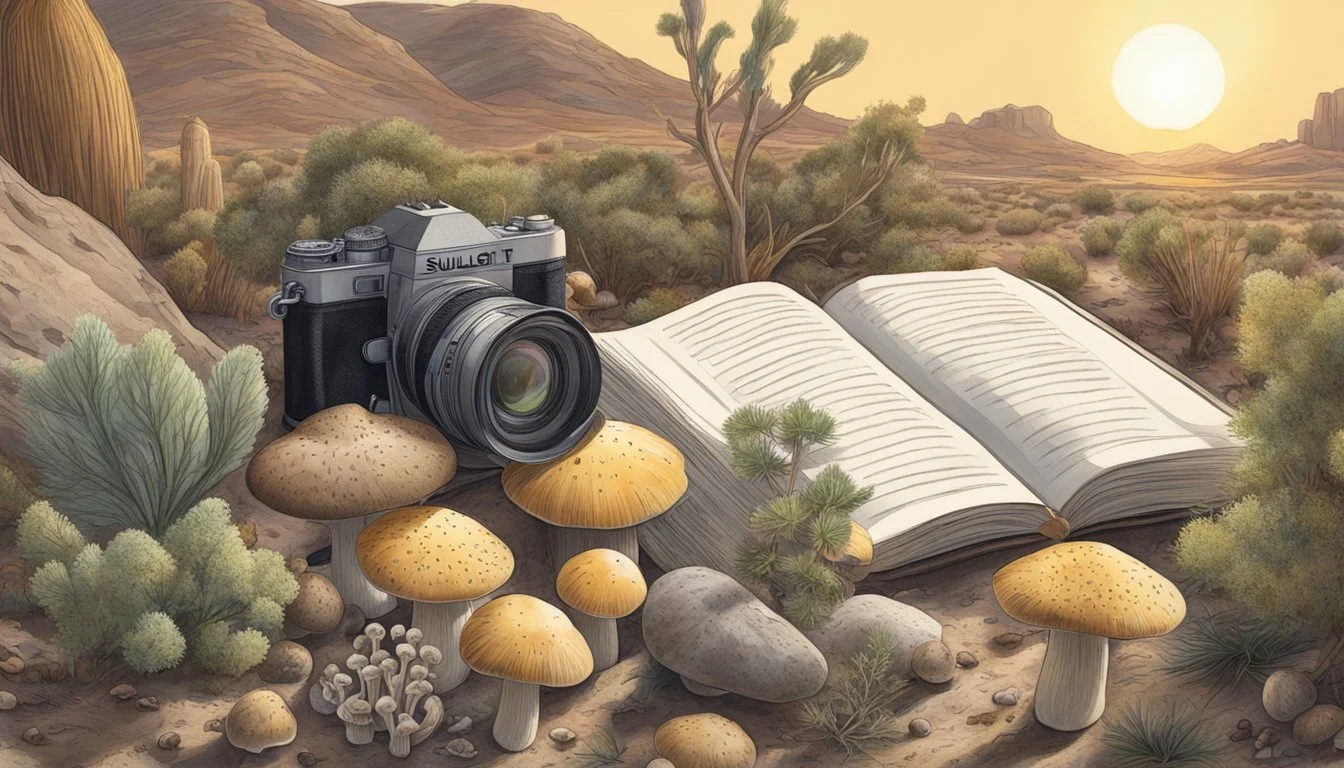Trans-Pecos Mushroom Hunting
Expert Strategies and Prime Locations
Mushroom hunting in the Trans-Pecos region of Texas offers a unique and fascinating experience for both seasoned mycologists and curious adventurers. The arid climate and distinctive landscapes, including rocky limestone terrains and deep canyons, create an interesting environment for mushroom growth. Despite the challenging conditions, a variety of fungi can be found, each adapted to the local ecosystem.
The diverse habitats within the Trans-Pecos, from high desert areas to the unique Devils River region, support an array of fungal species. Hunting mushrooms here not only uncovers hidden gems of the fungal world but also provides an opportunity to appreciate the intricate balance of nature in this rugged part of West Texas.
Experienced guides, like those from Trans-Pecos Guide Service, can enhance this adventure by sharing their extensive knowledge of the region's wildlife and plant life. With over 30 years of experience in West Texas, they are well-equipped to make your mushroom hunting trip both educational and successful. This combination of expertise and enthusiasm ensures a rewarding and memorable experience in the captivating landscapes of the Trans-Pecos.
Overview of The Trans-Pecos Region
The Trans-Pecos region is located in West Texas, characterized by its unique combination of mountain and desert habitats. This area is part of the Chihuahuan Desert, known for its stunning landscapes and diverse ecosystems.
Stretching over 19 million acres, the Trans-Pecos includes desert grasslands, desert scrub, salt basins, sand hills, and rugged plateaus. The region supports a wide variety of plant species, including 268 grass species and 447 woody plant species.
Mountains such as the Guadalupe, Davis, and Chisos ranges provide elevated terrain that contrasts with the low desert basins. This topographical variation contributes to the area's high biodiversity.
The climate in the Trans-Pecos is arid, with hot summers and mild winters. Rainfall is sparse, contributing to the desert environment. Nevertheless, the region's microhabitats, influenced by altitude and terrain, create pockets where diverse flora and fauna thrive.
The Pecos River defines the eastern edge of the Trans-Pecos. This river provides a rare water source in an otherwise dry environment, supporting both wildlife and vegetation diversity.
The Trans-Pecos is renowned for its ecological richness, from its variety of cacti and succulents to its native wildlife, making it a unique destination for outdoor enthusiasts and researchers alike.
Climate and Conditions for Mushroom Growth
The Trans-Pecos region, with its unique climate and diverse vegetation, offers specific conditions that are either conducive or challenging for mushroom growth. Key factors include temperature ranges and soil types characteristic of this part of Texas.
Temperature and Precipitation
In the Trans-Pecos, temperatures can vary dramatically. Ideal ranges for most mushrooms lie between 55°F and 70°F (13°C to 21°C). When temperatures drop below 50°F (10°C) or exceed 80°F (27°C), mushroom growth slows.
Precipitation is another crucial factor. The area receives variable rainfall, with some parts experiencing as little as 10 inches annually. High humidity levels are necessary, ideally in the range of 90-100%, to sustain mushroom growth.
Soil Types and Vegetation
Soil types in the Trans-Pecos include desert grasslands, scrublands, and rugged plateaus, which offer differing substrates for mushrooms. Grasses like mesquite and oak woodlands provide organic material that supports fungal growth.
Certain plant species, like creosote bush, ocotillo, and tarbush, influence soil composition, enriching it with nutrients necessary for mushrooms. Mycorrhizal mushrooms, which form symbiotic relationships with plants, are especially prevalent in areas with diverse vegetation such as oak and desert shrublands.
Types of Mushrooms in the Trans-Pecos
The Trans-Pecos region offers a range of mushrooms. These mushrooms vary from delicious edible varieties to those that are best avoided for safety reasons.
Edible Varieties
The Trans-Pecos hosts multiple edible mushrooms known for unique flavors and textures. Species such as Agaricus bisporus (White Button, Cremini, and Portobello) thrive in this arid environment.
Shiitake mushrooms can occasionally be found near shaded, wooded areas. These mushrooms are cherished for their rich flavors.
Chanterelles also make an appearance in the Trans-Pecos. Recognized by their bright yellow color, they are popular for their nutty flavor. The Milk Cap mushroom, known for its distinctive appearance, adds to the region's culinary diversity.
Poisonous and Hallucinogenic Specimens
Hunters must be cautious as the Trans-Pecos is home to several dangerous mushrooms. Species such as the Amanita muscaria, noted for its distinctive red cap with white spots, are hallucinogenic and potentially toxic.
The Death Cap (Amanita phalloides) is another hazardous species. Its tempting appearance can easily mislead hunters. Mushrooms like the Magic Mushroom (Psilocybe species) can cause hallucinogenic effects. Their presence demands careful identification to ensure safety.
Wildlife such as Desert Mule Deer and Pronghorn may feed on various mushrooms, impacting their population and distribution. The Pecos River's surrounding ecosystem can also influence where mushrooms grow and thrive.
Mushroom Hunting Tips and Techniques
To ensure a successful mushroom hunting expedition in the Trans-Pecos region, one must consider the optimal times for hunting, gather the essential equipment, and follow important safety precautions.
Best Times to Go Hunting
Mushroom hunters should plan their expeditions for late summer to early fall when temperatures are cooler and rainfall is more frequent. Early morning is often the best time of day for hunting, as mushrooms are fresher and easier to spot. It’s crucial to monitor the local weather patterns. Rainfall and humidity significantly affect mushroom growth, with many species appearing 1-2 days after a good rainfall. For the best results, bring a field guide to identify the optimal conditions for different species.
Essential Equipment
Having the right equipment is vital:
Basket or Mesh Bag: Allows spores to disperse while you walk.
Knife: For cutting mushrooms cleanly from their stems.
Brush: For gently cleaning dirt off the harvested mushrooms.
Map and GPS: To navigate and mark mushroom-rich areas.
Notebook and Pen: For taking notes on conditions and locations.
Cooler: To keep mushrooms fresh, especially during warmer days.
Safety Precautions
Safety should always come first in mushroom hunting. Protective clothing and waterproof boots are essential to navigate moist and sometimes challenging terrain. Tick and mosquito repellent help guard against bites. Carry ample water and snacks to stay hydrated and energized. It’s advisable to hunt in pairs or groups and inform someone of your plans. Be mindful of private property; ensure you have the necessary license or permission to hunt in specific areas. Always cross-check your finds with a reliable guidebook to avoid poisonous varieties.
Legal and Environmental Considerations
Engaging in mushroom hunting in the Trans-Pecos requires awareness of legal obligations and environmental impact to ensure that activities are both lawful and sustainable.
Permit and License Requirements
Mushroom hunters must secure the necessary permits and licenses to collect fungi in the Trans-Pecos region. For public lands, such as Wildlife Management Areas (WMAs), special collection permits are often mandatory. Hunters should contact local authorities, like the Texas Parks & Wildlife Department, for specific permit requirements and application procedures.
Additionally, it is important to check for any hunting closures or restrictions. Unauthorized collection can lead to fines and legal action. Adherence to these regulations aids in the proper management of the ecosystem and supports ongoing restoration efforts.
Sustainable Collection Practices
Sustainable practices are crucial for minimizing the environmental footprint of mushroom hunting. Collecting mushrooms responsibly ensures that future generations can also enjoy these natural resources. Hunters should avoid overharvesting in any single area to prevent ecosystem imbalance.
Use a knife to cut fungi at the stem rather than pulling them out, which damages the mycelium network. Leave behind unearthed and overripe mushrooms to continue their life cycle. Avoid disturbing surrounding vegetation and soil. Practicing these methods promotes regeneration and maintains biodiversity, supporting wildlife management and conservation efforts in the Trans-Pecos.
By following these guidelines, mushroom hunters play a role in maintaining the health and sustainability of the Trans-Pecos region.
Mushroom Identification and Conservation
Understanding the key features of mushrooms and the importance of their conservation is crucial for sustainable foraging. Accurate identification prevents harmful mistakes, while conservation efforts help protect delicate ecosystems and their inhabitants.
Identifying Characteristics
Successful identification of mushrooms involves examining several key characteristics. The cap, stem, and gills or pores underneath the cap are primary features to study. Caps can vary in shape, color, and texture. For example, true morels possess a spongy-looking cap with distinctive ridges and pits, resembling a honeycomb pattern.
The environment where mushrooms are found is also identifying feature. In regions like the Trans-Pecos, mushrooms commonly grow in woodland areas with deciduous and coniferous trees. Observing these specific habitats, such as areas around the Rio Grande, can assist in accurately identifying the mushroom species.
Conservation of Mushroom Species
Conservation of mushroom species is not only essential for maintaining biodiversity but also for supporting wildlife. Mushrooms play a vital role in ecosystems, providing food for species such as the Desert Bighorn Sheep, which rely on these fungi during certain seasons.
Practicing sustainable foraging ensures that mushrooms continue to thrive. This involves harvesting only a portion of the mushrooms available, minimizing habitat disturbance, and avoiding overharvesting specific areas. Conservation efforts support the delicate balance of the region's ecosystems and help sustain not only the fungi but the entire biodiversity reliant on them.
Incorporating local conservation guidelines and respecting natural habitats can immensely contribute to the preservation of these communities. For example, foragers should seek guidance from local conservation authorities to understand the specific needs and protocols to follow.
Wildlife and Habitat in Mushroom Zones
The Trans-Pecos region, known for its diverse ecosystems, presents unique opportunities and challenges for mushroom hunters. The area is home to a variety of wildlife and conservation efforts aimed at preserving these habitats.
Common Animals Encountered
Mushroom hunters in the Trans-Pecos may encounter a wide range of wildlife. Notable species include Mountain Lions, which are elusive but present in the region’s rugged terrains. Javelina, small pig-like creatures, are often found in brushy areas.
Bighorn Sheep inhabit the mountainous regions, and spotting them can be a rare and exciting event. Aoudads, or Barbary sheep, are another mountainous species introduced to Texas and often mistaken for native bighorns. Black Bears are occasionally seen, mainly near riparian zones.
Bird species such as quail, raptors, and roadrunners also contribute to the region's rich biodiversity. This array of wildlife requires mushroom hunters to be constantly vigilant and respectful of their surroundings.
Habitat Preservation Initiatives
Multiple initiatives are underway to preserve the unique habitats of the Trans-Pecos. Texas Parks and Wildlife Department oversees efforts to manage and conserve these lands. They focus on protecting the delicate balance of the ecosystem, which supports species such as Bighorn Sheep and Mountain Lions.
Riparian conservation is critical, given these areas provide essential habitat for numerous species. Managing water resources and preventing overgrazing by livestock are primary strategies. Public access to certain areas, like the Black Gap Wildlife Management Area, is restricted to minimize human impact.
Educational programs aim to increase awareness about the importance of habitat preservation. These initiatives highlight the need for careful interaction with wildlife and ecosystems to ensure their longevity for future generations.
Planning Your Mushroom Hunting Trip
When planning a mushroom hunting trip to the Trans-Pecos region, consider the essential elements such as travel logistics and ensuring proper meals and hydration. Specifics like transportation and meal preparation will help enhance the overall experience.
Travel and Transportation
The Trans-Pecos region of West Texas offers a rugged and varied landscape, making it crucial to plan your transportation carefully. Most destinations, such as Alpine, might require a mix of driving and off-road capabilities. Ensure your vehicle is equipped for the terrain, possibly considering a 4x4 for reaching remote areas.
Lodging options vary from rustic cabins to more comfortable hotels. Booking in advance is advisable, especially during peak mushroom seasons in spring and fall. Maps and GPS devices are essential for navigation.
Plan for the possibility of encountering wildlife like Aoudad Sheep, especially in more secluded areas. Always check local regulations and requirements for hunting and foraging to ensure compliance.
Preparing Meals and Hydration
For a successful trip, pack nutritious and portable meals. Sandwiches, wraps, and salads with protein options such as boiled eggs or grilled chicken are ideal. For longer trips, consider foods that require minimal preparation but provide sustained energy.
Hydration is critical in the arid environment of the Trans-Pecos. Bring ample water, with a recommended minimum of one gallon per person per day. Utilize water purification methods if you plan to source water from natural reserves.
Additionally, snacks like nuts, dried fruits, and energy bars can help maintain energy levels throughout the day. Managing your meals and hydration can significantly impact your comfort and focus during the mushroom hunt.
Photography and Journaling
Effective mushroom hunting in the Trans-Pecos region involves not only finding these fascinating fungi but also documenting the experience through photography and detailed journaling. These practices enhance the overall understanding and provide valuable records.
Capturing the Hunt
Photographers should carry a reliable camera with a macro lens to capture intricate mushroom details. Mushroom photography often involves getting low to the ground, so tools like a small mirror can be useful to reflect images from challenging angles.
Lighting is critical. Using natural light, such as early morning or late afternoon sun, can highlight textures and colors. A portable diffuser can help soften harsh shadows.
Composition matters. Including elements of the surrounding habitat in photos can offer context. Focusing on varied angles and perspectives can reveal unique features of mushrooms.
Recording Observations
Maintaining a detailed journal is crucial. Hunters should always note the date, location, and conditions where each mushroom is found. Descriptions should cover size, color, shape, and any notable characteristics.
A journal entry might look like this:
Title Description Date June 2, 2024 Location Trans-Pecos, near Black Gap WMA Conditions Humid, partially shaded area Mushroom Type Amanita sp. Size 5 cm diameter cap, 7 cm stalk Color White cap, greenish gills Notable Features Velvety cap texture
Combining photographs with descriptions creates a comprehensive record. This process enables accurate identification and increases one's knowledge of mushroom ecology.
Supporting Local Economies
Mushroom hunting in the Trans-Pecos region provides significant benefits to local economies by bringing income to local businesses and guides. This activity also attracts visitors who directly spend money in the area, enhancing the economic vibrancy of small communities.
Economic Impact of Mushroom Hunting
Mushroom hunting generates substantial financial inflows. Visitors spend on permits, accommodation, and local cuisine. Permits and licenses, often required for hunting, generate official revenue channels that help maintain local infrastructure and conservation efforts.
Guides play a crucial role in educating enthusiasts about the local ecosystem. Their expertise ensures safe and sustainable hunting practices, making them indispensable to the economic fabric of the area.
Mushroom hunters participating in organized events, such as those facilitated by Big Time Texas Hunts, often spend more, boosting seasonal business activities. These organized events also attract a higher volume of participants, intensifying economic benefits within a short period.
Contributing to Local Businesses
Local businesses thrive on the influx of mushroom hunters. Lodges, bed-and-breakfasts, and hotels experience increased occupancy rates. This influx significantly impacts employment rates in the hospitality sector, providing jobs and supporting families residing in the region.
Restaurants benefit from the demand for meals, especially those offering locally sourced ingredients. Souvenir shops, outdoor gear stores, and gas stations also see increased foot traffic and sales.
Guides, with their specialized knowledge, often run their own small businesses or are employed by larger tour companies. They are essential not only for the direct revenue they bring but for enhancing the overall visitor experience, encouraging repeat visits and positive word-of-mouth.


